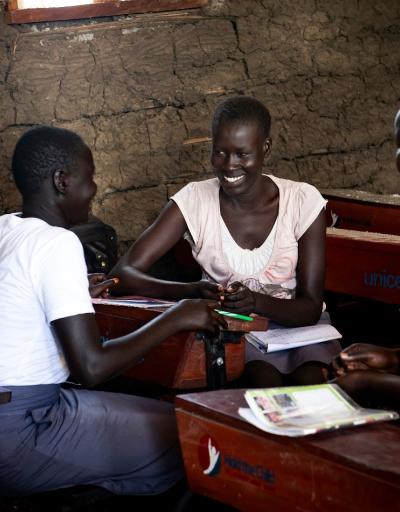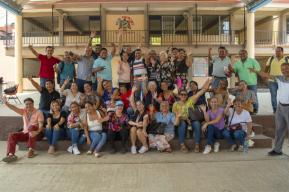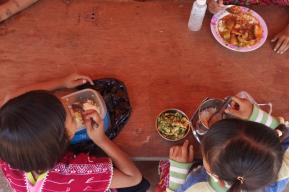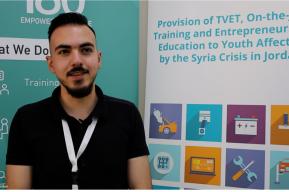In South Sudan, a nation ravaged by civil war, food insecurity, and natural disasters, millions of people have been displaced, creating significant educational barriers for children and youth. With approximately 2.2 million children out of school, many face additional challenges, such as lack of access to healthcare and psychological trauma, making the pursuit of education an uphill battle.
Amid these circumstances, Giir Mabior, the Director for Data and Statistics in the Ministry of General Education and Instruction, and his team are working tirelessly to ensure that the most vulnerable children have access to quality education. His mission is gathering crucial data needed to transform educational outcomes for these young lives. To do this, he and his colleagues must overcome extraordinary challenges to reach schools and teachers.
The power of data: Driving educational resilience in crisis
“There is nothing that can be done without reference to data,” says Mabior, who manages South Sudan’s educational management information system (EMIS). Reliable, accurate, and timely data are indispensable in identifying needs, targeting interventions, and evidenced-based policy-making.
The need for good data is central to Mabior’s work on the project Strengthening Education Management and Information Systems (EMIS) and Data for Increased Resilience to Crises led by UNESCO with the support of Education Cannot Wait (ECW), NORCAP and the Swedish International Development Association (SIDA). The project aims to make a difference in a country long embroiled in protracted crises through the holistic improvement of its education data management and collection practices.
With this initiative, launched in 2019, UNESCO and its partners are implementing country-specific interventions to make EMIS more crisis-sensitive and displaced populations more visible in education data. When asked about the most urgent need addressed by this project, Mabior mentioned teacher training, “…In conflict settings many qualified teachers decided to (leave) for safer areas (like the refugee camps) thus leaving the conflicted areas with no (properly trained) teachers. It’s critical for the remaining teachers to be better trained (to provide accurate data) in emergency areas.”
Overcoming obstacles to collect crucial data
In complex contexts like South Sudan, data collectors often go to great lengths to ensure the collection of timely and accurate data. This demands travel to far-flung areas of the country served by severely underdeveloped infrastructure. Reflecting on the transition from manual to digital data collection in 2021, Mabior states, "It was very difficult…we used tablets, requiring enumerators to visit each school and complete forms alongside teachers. If information was missing, enumerators had to wait or return the next day, or even two days later."
Having completed several education census data collection exercises, Mabior is also well-versed in the unique challenges posed by the landscape, such as avoiding predatory wildlife and traversing regions struck by natural disasters. “(Once), I couldn’t cross a river because there was a hippopotamus at the point of crossing. I had to use another route, and that took me around four hours to reach the school and another four hours to get back. Despite all that time spent, I only completed data collection for one school that day,” shared Mabior. Another story happened during the 2021 census: “As the result (of flooding), there were a lot of wild animals including crocodiles that were also struggling to escape the floods. My colleague was going to collect data but, on the way, he was advised that there was a leopard that was attacking people. Because of this, the data from that school was not collected.”
In addition to tackling logistical obstacles, the data collection process might entail overcoming perilous and daunting conditions in conflict-stricken areas. “My colleague fell into an ambush, but fortunately for him, as he talked, they (local armed group) realized he was not from that community (targeted by the armed group) as his accent was different ... However, his motor bike rider was from that community, and they insisted to retain him and allowed my colleague to go. My colleague insisted that it would not be morally right to leave the rider. They stayed for two hours negotiating until at the end they were allowed both to leave,” shared Mabior.
Paving the way for change: The impact of enhanced education data
Despite the challenges, significant strides have been made. Mabior notes, "Since the EMIS team received analysis and data-sharing training, we have noticed a great improvement as we are now able to report on the migration data, which includes the returnees and the refugees in South Sudan’s data yearbook." He adds, "We've also made progress by integrating the previously fragmented education dataset and consolidating it onto a single platform."
This increased visibility for marginalized populations, such as Internally Displaced Persons (IDPs) and refugees, in South Sudan’s EMIS will allow for a more comprehensive understanding of the crises' effects, paving the way toward measurable action by partners, governments, and other stakeholders to close gaps. Mabior is one of the people on the ground unlocking the transformative potential of education data to create a brighter future for the children and youth of South Sudan.
- UNESCO’s work in education in emergencies









